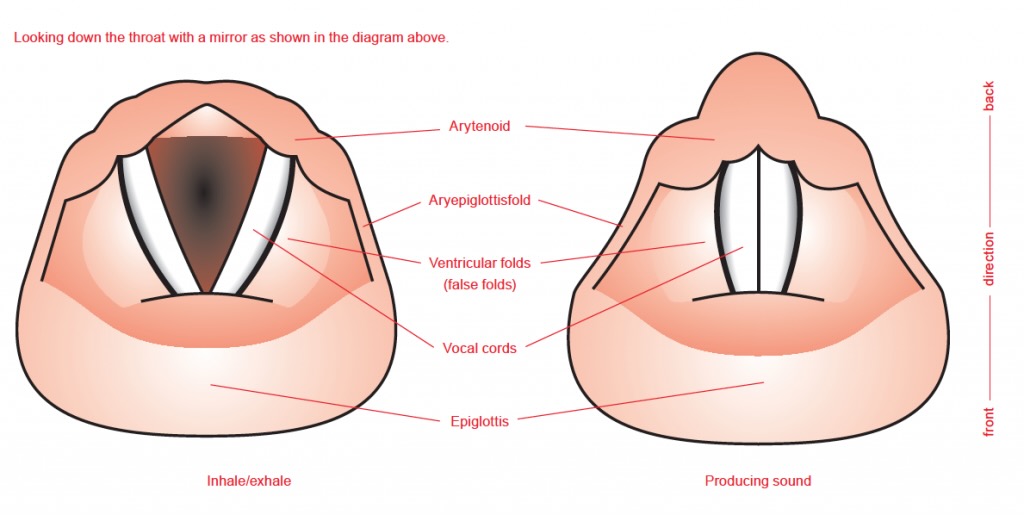Below is a comprehensive guide on vocal cord dysfunction (VCD)—what it is, how it differs from other breathing disorders, and the exercises that can help alleviate symptoms. We’ll also discuss why it’s crucial to seek professional assessment if you experience persistent vocal cord issues, and how Dr. Edmund Fisher in Bakersfield stands out as an excellent resource for managing VCD and other ENT (Ear, Nose, and Throat) concerns.
Understanding Vocal Cord Dysfunction
1. What Is VCD?
Vocal cord dysfunction (VCD)—sometimes referred to as paradoxical vocal fold motion (PVFM)—occurs when the vocal cords close (or partially close) during inhalation or exhalation. Normally, the vocal cords open to allow air to flow into the lungs. In VCD, they instead constrict or come together, making it difficult to breathe.
2. Common Symptoms
People with VCD often experience:
• Sudden episodes of breathing difficulty, with a tight feeling in the throat
• Stridor (a high-pitched, wheezing sound) upon inhalation
• Hoarseness or throat tightness
• A sensation of choking or air hunger
Because these symptoms can mimic asthma or severe allergic reactions, VCD is frequently misdiagnosed. Unlike asthma—which typically involves the bronchial tubes—VCD episodes begin at the level of the vocal cords in the throat.
3. Triggers and Causes
VCD can be triggered by various factors, including:
• Exercise or high-intensity activities
• Stress or anxiety
• Exposure to irritants like smoke, strong perfumes, or chemicals
• Acid reflux or GERD (gastroesophageal reflux disease)
• Postnasal drip or sinus-related issues
Addressing these triggers often goes hand in hand with learning breathing exercises to control vocal cord constriction.
How VCD Differs from Asthma
Before diving into specific exercises, it’s important to distinguish VCD from asthma, as misdiagnosis can lead to ineffective treatments:
• Asthma primarily involves inflammation and narrowing of the small airways (bronchioles) in the lungs. Medications like inhaled steroids or bronchodilators typically help.
• VCD involves the upper airway (the larynx) and is typically not relieved by asthma inhalers.
Many patients with chronic “uncontrolled asthma” may, in fact, have VCD—or a combination of both—requiring distinct approaches, including voice therapy and breathing retraining.
The Role of Exercises in Managing VCD
1. Why Breathing Exercises Help
When the vocal cords constrict, it’s often due to involuntary muscle tension or a maladaptive response to stress, exertion, or irritants. Breathing exercises can:
• Train the vocal cords to remain open during inhalation
• Promote relaxation of the throat and laryngeal muscles
• Reduce anxiety that may exacerbate VCD episodes
• Improve airflow and oxygen exchange
Breathing exercises are most effective when combined with trigger management and—in some cases—speech therapy or voice therapy.
2. Working with a Specialist
Although practicing on your own can help, working with an ENT specialist or speech-language pathologist familiar with VCD can significantly improve outcomes. Dr. Fisher in Bakersfield works alongside specialists and employs a holistic approach that tailors exercises to each patient’s triggers, lifestyle, and respiratory patterns.
Top Exercises for Vocal Cord Dysfunction
Below are several techniques commonly recommended for VCD. Always consult with a healthcare professional before beginning any new exercise regimen, especially if you have concurrent conditions like asthma or GERD.
Exercise 1: Diaphragmatic (Belly) Breathing
What It Does
Diaphragmatic breathing encourages deeper, more controlled inhalation and exhalation, reducing tension in the neck and throat muscles.
How to Perform
1. Find a Comfortable Position: Sit or lie down with your shoulders relaxed.
2. Place One Hand on Your Belly: Position your other hand on your chest to monitor movement.
3. Inhale Through Your Nose: Slowly breathe in, feeling your belly (not your chest) rise against your hand.
4. Exhale Slowly: Purse your lips and gently exhale, noticing how your belly falls.
5. Rhythm: Aim for a 4-second inhale and a 4-second exhale; adjust timing as comfortable.
Frequency
– Practice 5–10 minutes daily, gradually increasing time. During a VCD episode, focus on this technique to regain control over your breath.
Exercise 2: Rescue Breathing / Sniff-and-Sip Technique
What It Does
This technique can break a VCD episode by re-establishing normal vocal fold positioning.
How to Perform
1. Sniff Inward: Take a quick “sniff” of air through your nose.
2. Exhale: Purse your lips and gently blow out.
3. Repeat: Perform 3–4 cycles of sniff in, blow out.
4. Add a Sip (Optional): After a sniff, take a small sip of water and swallow, then exhale. Swallowing helps relax the throat muscles.
Frequency
– Use this method during an episode or immediately when you sense vocal tightness.
Exercise 3: Pursed-Lip Breathing
What It Does
Pursed-lip breathing helps release trapped air and reduce the sensation of choking or fullness.
How to Perform
1. Relax Shoulders and Neck: Sit upright with shoulders down.
2. Inhale Slowly: Count to 2 while inhaling through your nose with your mouth closed.
3. Purse Your Lips: Exhale gently through your lips (like blowing out candles) to a count of 4.
4. Keep It Slow: The exhale should be at least twice as long as the inhale.
Frequency
– Practice periodically throughout the day, especially if you feel your throat tightening.
Exercise 4: Gentle Throat Relaxation / Jaw Release
What It Does
Often, people with VCD clench their jaw or constrict throat muscles during episodes. These gentle stretches reduce tension.
How to Perform
1. Neck Rolls: Slowly roll your neck in a semicircle, side to side. Avoid full rotations if they strain your neck.
2. Jaw Release: Let your jaw drop slightly, as if yawning. Close gently. Repeat several times.
3. Tongue Stretches: Open your mouth, gently move your tongue in and out or side to side.
Frequency
– 1–2 minutes, 2–3 times a day, or whenever you feel tension building in your face, jaw, or throat.
Exercise 5: Breathing Coordination with Voice Therapy
What It Does
For some individuals, working on spoken or vocal exercises in tandem with breathing can reduce vocal cord constriction. A speech-language pathologist may incorporate gentle vocal tasks (like humming or soft phonation) alongside breath control.
Sample Task
1. Begin in a Diaphragmatic Breathing Pattern
2. Add Humming: Gently hum as you exhale, focusing on relaxed throat movement.
3. Open Vowel Sounds: Transition to softly phonating vowels (like “ah”) as you exhale, maintaining an open, relaxed throat.
Frequency
– Performed under professional guidance, typically 1–2 sessions per week plus home practice.
Additional Tips for Managing VCD
1. Identify and Avoid Triggers: Keep a journal to track your episodes—note environmental irritants, emotional stress, or physical exertion leading up to them.
2. Manage Stress and Anxiety: Techniques like mindfulness, meditation, or yoga can help you handle emotional triggers.
3. Address Reflux: If GERD or acid reflux contributes to your symptoms, medications or dietary changes might significantly reduce VCD flare-ups.
4. Proper Warm-Ups: Athletes or singers prone to VCD may benefit from a structured warm-up routine to prep the respiratory system.
5. Hydration: Drinking enough water keeps the throat and vocal cords lubricated, reducing dryness that may worsen constriction.
Dr. Fisher in Bakersfield: The Best Choice for Vocal Cord Dysfunction
1. Expertise in ENT and Airway Disorders
With extensive training in Ear, Nose, and Throat care, Dr. Fisher is adept at diagnosing and managing upper airway disorders—particularly those that are often confused with asthma or bronchial issues. His comprehensive knowledge of vocal anatomy ensures a precise approach to treating VCD.
2. Personalized Treatment Plans
Vocal cord dysfunction varies widely from patient to patient. Dr. Fisher creates individualized plans that may include:
• Breathing exercises tailored to specific triggers
• Voice therapy or collaboration with speech-language pathologists
• Medical interventions if needed (e.g., addressing reflux or allergies)
3. Integration of Advanced Diagnostics
Dr. Fisher’s practice in Bakersfield utilizes state-of-the-art diagnostic tools such as laryngoscopy or stroboscopy (when indicated) to visualize the vocal cords in real time. These methods help confirm a VCD diagnosis and track improvement over time.
4. Holistic Approach
Because many VCD episodes are stress-related or triggered by other ENT issues, Dr. Fisher’s holistic strategy includes evaluating sinus health, allergies, and breathing mechanics. This integrative view ensures every contributing factor is addressed.
5. Emphasis on Patient Education
Beyond diagnosis and intervention, Dr. Fisher emphasizes patient education. Understanding how to apply the breathing techniques, identifying triggers, and knowing when to seek help all empower you to stay in control of your condition.
When to Seek Professional Help
If you’ve tried breathing exercises at home but still experience frequent or severe VCD episodes:
• Consult an ENT specialist like Dr. Fisher
• Rule out asthma or other respiratory conditions
• Get individualized guidance on stress management or additional therapies
Early intervention often prevents months or years of misdiagnosed or mistreated symptoms.
The Bottom Line
Vocal cord dysfunction can be frustrating and even frightening, but targeted exercises—from diaphragmatic breathing to rescue techniques—offer a tangible way to manage episodes and restore normal airflow. Paired with stress management, trigger avoidance, and professional support, these exercises can drastically improve your quality of life.
If you’re seeking personalized care, Dr. Edmund Fisher in Bakersfield is an excellent choice. With expertise in ENT and airway function, plus a patient-centered philosophy, Dr. Fisher can help you implement a long-term plan to keep VCD under control. Ready to breathe freely and reclaim your daily life? Schedule a consultation and discover a proven path toward relief.




